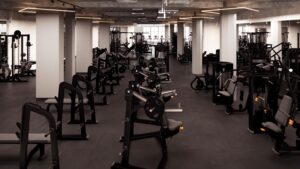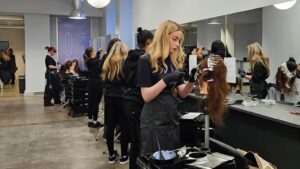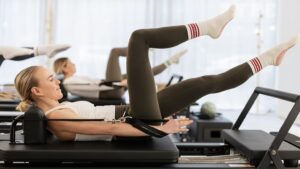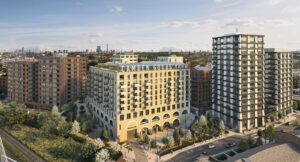
The Basement Gym + Studio opens in Camden Town
Camdenist readers get 50% off their first month’s membership, too

I moved to London from South Africa in 2018 to study theatre and performance, and in my first year here, I realised Apartheid history wasn’t very well-known amongst my peers. So, I kept it in the back of my mind that if the right opportunity presented
itself to make a show about Apartheid, I’d do it. South Africa still faces problems
caused by Apartheid, so I see it as a current problem rather than a historical one, and it feels important to talk about it. I made this show two years ago at university and thought now is a good time to revisit it and present it to a public audience.
Apartheid, as an oppressive regime, was effective in ethnic discrimination; segregation, violating human rights through force, causing long term socio-economic problems. Globally, it is used as a measuring tool to understand when human rights are being violated. As an artist, that’s interesting to engage with.
I’ve found that people over the age of 50 seem to know more about it, which makes sense because it was a major event that happened during their lives. We can also credit the UK’s Anti-Apartheid Movement. They were very active, helped to create awareness and initiated civil boycotts all to help bring it to an end. I think fewer young people understand what it was because Apartheid generally isn’t compulsory history learning. Understandably, I was taught about it in my 9th grade history class, but I guess I am surprised that it is not compulsory learning here, given that South Africa is part of the Commonwealth. However, there are 56 countries in the Commonwealth, so I imagine it’s difficult to include them all in a school curriculum.
I don’t think I’d have considered making this if I was in South Africa. It made sense to do it here, but after making the show I now think it could be appreciated back home. I am a white Afrikaner born in the democracy, and a big part of my creative process involved finding a mode of performance that could use my white identity to good effect. I asked myself, ‘How do I make a show about Apartheid if I’m the only South African in the room?’. My experience as a drama student during Covid allowed me to learn some tricks about how technology can bring absent performers into a physical space. So, I finally landed on the idea to write about key events in Apartheid’s history from the perspective of weapons and personal items that were there, and to put them onstage. I then asked drama students from Stellenbosch University in South Africa to record the objects’ monologues so they could ‘speak’ onstage at the push of a button. Writing from an object’s perspective allowed me to use a blend of real and fictional characters, verbatim and storytelling. This way, I was able to capture individual and shared experiences that have been documented in eyewitness statements from these events, but also create visibility for anonymous victims. In the show, I talk about how Apartheid affects South Africa today, and that’s where you will hear about what I saw growing up in the post-Apartheid democracy.

I wanted to make a performance that could break a heart. The show isn’t trying to deliver an all-encompassing account of what Apartheid was. It’s not a lecture. It will make you feel something for the people in the story, and that’s what I want. Maya Angelou once said, “I’ve learned that people will forget what you said, people will forget what you did, but people will never forget how you made them feel.” I kept this in mind as I was making the show, and I hope the show can make you feel something that you will always remember.
The show is experimental, multilingual, and contemplative. It doesn’t use an actor/writer/director dynamic. It uses sound and scenography to tell a story. So, I feel that it fits well within the diverse collection of work you typically find at the Fringe. I am grateful that the show was selected because it gives me the chance to represent my country and that makes me proud. And I am thrilled that I can perform the show at Camden People’s Theatre because it’s only a 20-minute walk from Mandela Street in Camden where the Anti-Apartheid Movement had their headquarters, hence the street being named after Nelson Mandela. It feels like a good sign.
If I make a profit from ‘That Boy Has No Shoes’, I’m going to use it to buy shoes for children at two primary schools in my hometown, George, in South Africa. These
schools are attended by children from the township, and it only makes sense to use the profit from this show to give back to the community.
Read more stories about Camden Fringe at Camdenist.com
See That Boy Has No Shoes at Camden People’s Theatre on July 29th & 30th July, and August 1st & 3rd. Tickets and more info here.

Camdenist readers get 50% off their first month’s membership, too

A brand new hairdressing and barbering academy has landed in Camden Town and is now seeking style-conscious models and enthusiastic trainees

We speak to founder, Sol, about bringing the studio to Kentish Town

Explore the neighbourhood’s brand new neighbourhood